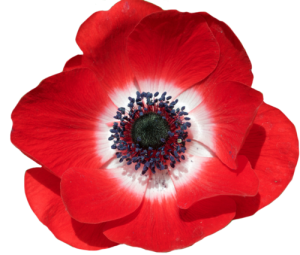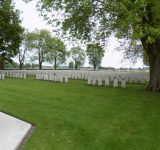Personal Details
Born in Hodnet, Shropshire on 6 January 1898, the third son of the Richard and Sarah Ann Sands of 55 Church Hill, Ironbridge, Shropshire.
There are two CWGC (Commonwealth War Graves Commission) records for 349508 Canadian Field Artillery – for Allen Sands and James Gilbert. Investigation and research has confirmed the following:
Allen Sands was born in the Market Drayton district. There is only one Allen Sands’ birth recorded in the United Kingdom in 1897 and 1898. He is recorded living in Fauls Green in the 1901 Census and is also commemorated on the Lower Heath School memorial. He joined the Royal Navy on 1 April 1913, service number J24279. He served on Impregnable, Theseus, Vivid 1 and Carnarvon, deserting from Carnarvon in Montreal 26 October 1916 and still missing 27 November 1916.
James Gilbert enlisted in the Canadian Army in Montreal on 24 November 1916, providing different place of birth and next of kin to Allen Sands, but interestingly declaring his date of birth as 6 January 1897. The army service records confirm that Allen Sands enlisted under the assumed identity of James Gilbert and the information initially provided regarding next of kin and his will were false.
There is no evidence that Allen Sands (Able Seaman J24279) was court martialled. The trail of events and his identity did not come to light until after his death, killed in action. Campaign medals are recorded as awarded to Able Seaman Allen Sands and also to Gunner Allen Sands although we are unsure that medals were awarded by the Royal Navy due to the circumstances.
Both names are recorded on the headstone in the Vlamertinghe New Military Cemetery.
Allen is also commemorated on the Ironbridge memorial.
Military Details
Regiment : Royal Navy and Canadian Field Artillery
Rank : Able Seaman and Gunner
Service Number : J24279 (Royal Navy) and 349508 (Canadian Field Artillery)
Killed in action; France 29 November 1917 Aged 19

The 1914 Star (also known as 'Pip') was authorised under Special Army Order no. 350 in November 1917 and by an Admiralty Fleet Order in 1918, for award to officers and men of the British and Indian Expeditionary Forces who served in France or Belgium between 5 August and midnight of 22–23 November 1914. The former date is the day after Britain's declaration of war against the Central Powers, and the closing date marks the end of the First Battle of Ypres.
The 1914–15 Star (also known as 'Pip') was instituted in December 1918 and was awarded to officers and men of British and Imperial forces who served against the Central European Powers in any theatre of the Great War between 5 August 1914 and 31 December 1915. The period of eligibility was prior to the introduction of the Military Service Act 1916, which instituted conscription in Britain.
The British War Medal (also known as 'Squeak') was a silver or bronze medal awarded to officers and men of the British and Imperial Forces who either entered a theatre of war or entered service overseas between 5th August 1914 and 11th November 1918 inclusive. This was later extended to services in Russia, Siberia and some other areas in 1919 and 1920. Approximately 6.5 million British War Medals were issued. Approximately 6.4 million of these were the silver versions of this medal. Around 110,000 of a bronze version were issued mainly to Chinese, Maltese and Indian Labour Corps. The front (obv or obverse) of the medal depicts the head of George V. The recipient's service number, rank, name and unit was impressed on the rim.
The Allied Victory Medal (also known as 'Wilfred') was issued by each of the allies. It was decided that each of the allies should each issue their own bronze victory medal with a similar design, similar equivalent wording and identical ribbon. The British medal was designed by W. McMillan. The front depicts a winged classical figure representing victory. Approximately 5.7 million victory medals were issued. Interestingly, eligibility for this medal was more restrictive and not everyone who received the British War Medal ('Squeak') also received the Victory Medal ('Wilfred'). However, in general, all recipients of 'Wilfred' also received 'Squeak' and all recipients of The 1914 Star or The 1914/1915 Star (also known as 'Pip') also received both 'Squeak' and 'Wilfred'. The recipient's service number, rank, name and unit was impressed on the rim.
Further Information
If you can provide any further information on Allen Sands please get in touch by leaving a comment below, using our Contact Form or by calling in to Whitchurch Heritage Centre.
Information provided by Whitchurch Museum and Archives


